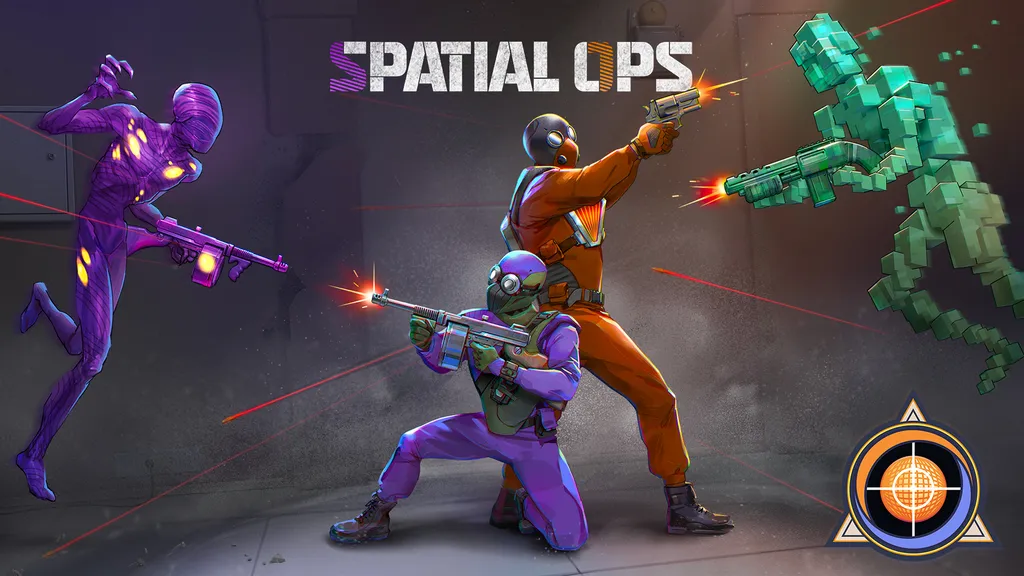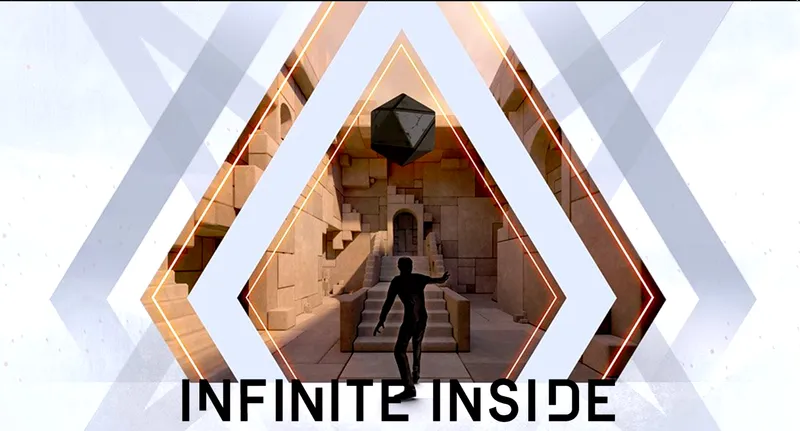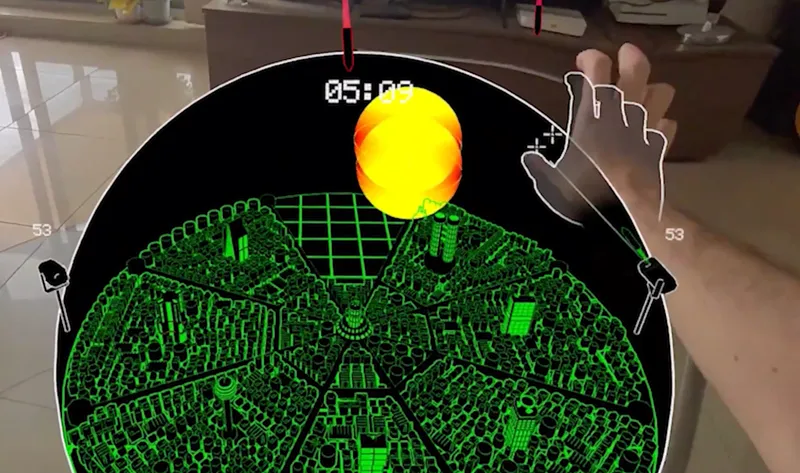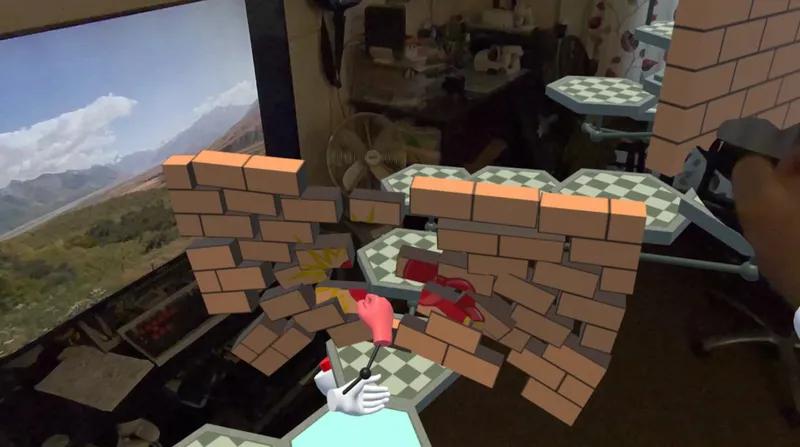Recent Laser Dance and Spatial Ops demos show that developers are figuring out how to make compelling games meshed with your physical environment.
Laser Dance from Cubism's developer Thomas Van Bouwel asks the player to pick two spots on the wall to become starting and ending points for an obstacle course. Then the game draws a room full of lasers to move through.
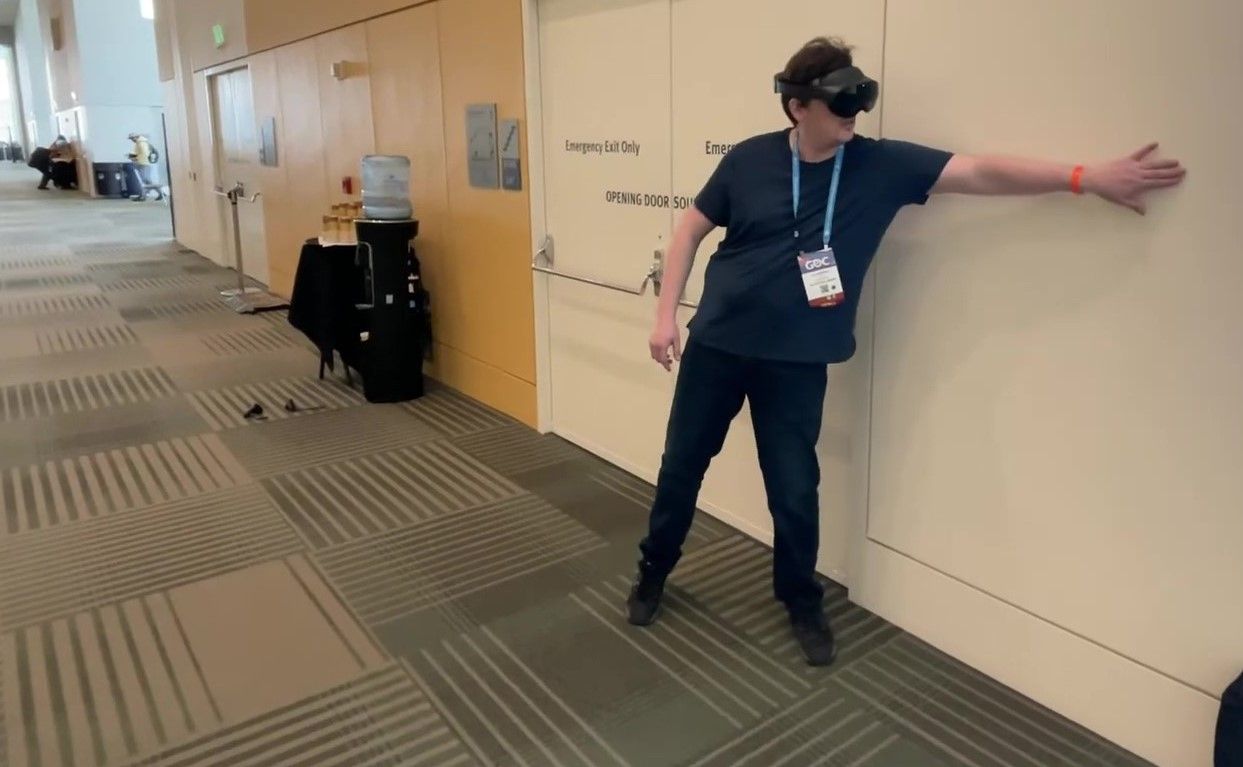
I completed a handful of puzzles in an early prototype of Laser Dance, ending with me rolling down a quiet hallway under some virtual lasers at the Moscone Convention Center of San Francisco.
"The player places two buttons on opposing walls, and in every level walks back and forth between them," Van Bouwel explains. "Each button press spawns a new procedural laser pattern that's adapted to the room's size and layout."
Resolution Games showed a singe-player wave-based version of its Spatial Ops mixed reality game at GDC too. It overtook a physical wall and replaced it with a portal featuring enemies from another world that could run into my room. It was immediately reminiscent of mixed reality work done by Magic Leap with its AR headset and projects like Dr. Grordbort's Invaders. Here, though, the difference provided by VR's superior field of view gave me much-needed situational awareness of both spaces.
Elsewhere at GDC, I saw Resolution Games' Demeo with four players gathered around a physical table in mixed reality on Quest VR headsets. A short walk away, I found a remarkably similar experience delivered by Tilt Five's AR glasses.
Taking all these examples together starts to paint a picture of just how limited existing VR experiences are by concepts like "room-scale" chaperones or "stationary" guardians.
Mixed Reality's Promise: Pairing Great VR Hardware With Great AR Content
"Room-scale" and "stationary" refer to modes for VR content that will seem wildly constrained in retrospect.
With "room-scale", the virtual content isn't actually informed by the physical layout of the objects in your room. With "stationary", you're often forced to experience simulated movement through vast virtual worlds with varying comfort trade-offs.
In mixed reality gaming, any table, wall, floor, board, screen, or window can become a surface for digital content. You could show the same things across both surfaces in real-time for a laid back work or entertainment experience. Or you could turn the surface into a wormhole connecting multiple physical locations for something more active.
Mixed reality might not be the world-centric vision of the "metaverse" seen in Horizon Worlds, Rec Room or even VRChat. And it's not the all-day AR vision imagined by science fiction either, at least not yet. But long-term multi-hour sessions with synced surfaces or persistent portals to other people and places alongside a new class of mixed reality gaming? Yeah, that might be coming soon in a very big way.
Given how different and compelling experiences like Laser Dance and Spatial Ops felt from most VR content, there are real hints here that mixed reality is still both in its infancy and the next frontier in software design.

